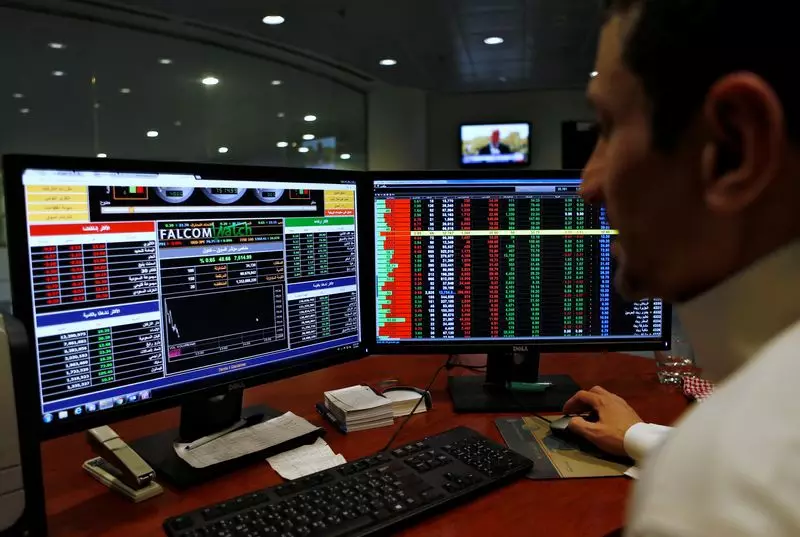The stock markets in the Gulf region saw a positive trend on Sunday, with the Saudi index leading the way. After hitting a five-month low, the benchmark index in Saudi Arabia rose by 1.1%. This increase was primarily driven by gains in various sectors, particularly in IT, utilities, and healthcare stocks. Notably, ACWA Power saw a significant advancement of 4.4%, while Saudi National Bank, the largest lender in the kingdom, added 1.8%. However, Saudi Aramco experienced a decline of 1.9% to its lowest level in over a year.
Saudi Arabia’s decision to offer around 1.545 billion Aramco shares at 26.7 to 29 riyals received a positive response from investors. Despite the decline in the stock price, there was an increase in demand for the shares within hours of the sale commencement. This indicates strong investor confidence in the potential of Saudi Aramco and the opportunities it presents.
In Qatar, the benchmark index witnessed a consecutive increase for the second session, rising by 0.7%. The energy, finance, and real estate sectors contributed to this growth, with companies like Qatar Fuel Co and Qatar Gas Transport recording significant advancements. The positive market performance in Qatar reflects a broader trend of stability and growth in the Gulf region.
The rise in U.S. inflation data in April aligned with market expectations and fueled optimism regarding potential interest rate cuts by the Federal Reserve. Given that most Gulf currencies are pegged to the dollar, any changes in U.S. monetary policy have a direct impact on countries like Saudi Arabia, the United Arab Emirates, and Qatar. This interconnectedness underscores the importance of global economic factors in shaping local market trends.
Outside the Gulf region, Egypt’s blue-chip index faced challenges, declining for the fifth consecutive session and ending 0.2% lower. The majority of sectors in Egypt witnessed negative trends, with companies like Eastern Company and Talaat Mostafa Group experiencing declines. However, Juhayna Food stood out with a 2.5% increase in its first-quarter net profit, showcasing resilience in the face of market fluctuations.
The stock markets in the Gulf region exhibit a mix of positive and negative trends, influenced by both local and global factors. While Saudi Arabia and Qatar show signs of growth and stability, challenges persist in markets like Egypt. The key takeaway is the interconnected nature of global markets and the need for investors to carefully assess both internal and external factors when making investment decisions.


Leave a Reply